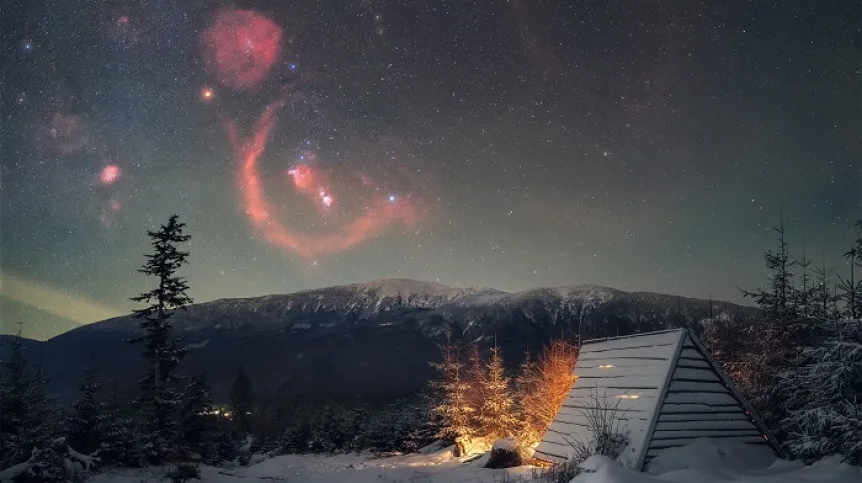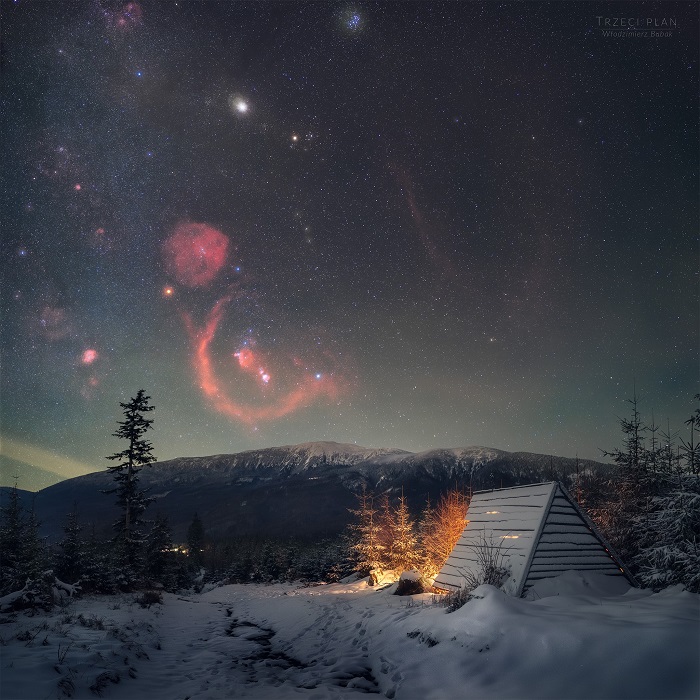
"A photo of Orion over Babia Góra, taken by Włodzimierz Bubak, was selected as NASA's Astronomy Picture of the Day (APOD). The photograph was captured on the night of the winter solstice."
Astronomy Picture of the Day (APOD) website has been run by NASA since 1995. One photo of astronomical objects or astrolandscape is published every day. On December 28, 2024, the website published a photograph taken by a Polish author.
'The featured photograph shows Orion rising over Babia Góra, captured during the long night of the winter solstice. In addition to the characteristic constellations, it also shows hydrogen emission nebulae, such as Barnard's Loop, M42, and the Rosette Nebula. I managed to capture these objects, normally invisible to the naked eye, with an astromoded camera equipped with a filter that allows the red hydrogen-alpha light to pass through', the author of the photo describes.
He adds that the foreground of the photo features a hut in the Mędralowa Range, 'which I illuminated with a tourist lamp to emphasize the contrast between the warm light and the cold of the winter night'.

Włodzimierz Bubak is a teacher at a technical school in Jaworzno. 'I have been involved doing photography for five years, and in my works I try to highlight multi-plane, perspective, unusual atmospheric conditions and night landscapes. I am a regionalist and I like it when you can find familiar places captured in an unconventional way in the photos', he says.
According to the author of the APOD photo of the day, astrophotography is a unique combination of science and art that allows to discover the beauty of the Universe and share it with others. 'I am glad that this form of photography is becoming increasingly popular in Poland. On the one hand, the availability of equipment and unlimited knowledge resources on the Internet lower the threshold of entry into this passion. On the other hand, the increasing light pollution means that there are fewer and fewer places with dark skies in our country every year', he says.
Astronomy Picture of the Day (APOD) website has been run by NASA since 1995. In recent months, it featured several photographs taken by authors from Poland: Marcin Rosadziński (three times), Mariusz Durlej, Antoni Zegarski, Marcin Ślipko, Daniel Koszela and Ireneusz Nowak.
The featured photo can be viewed at: https://apod.nasa.gov/apod/ap241228.html (PAP)
bar/ zan/ amac/













